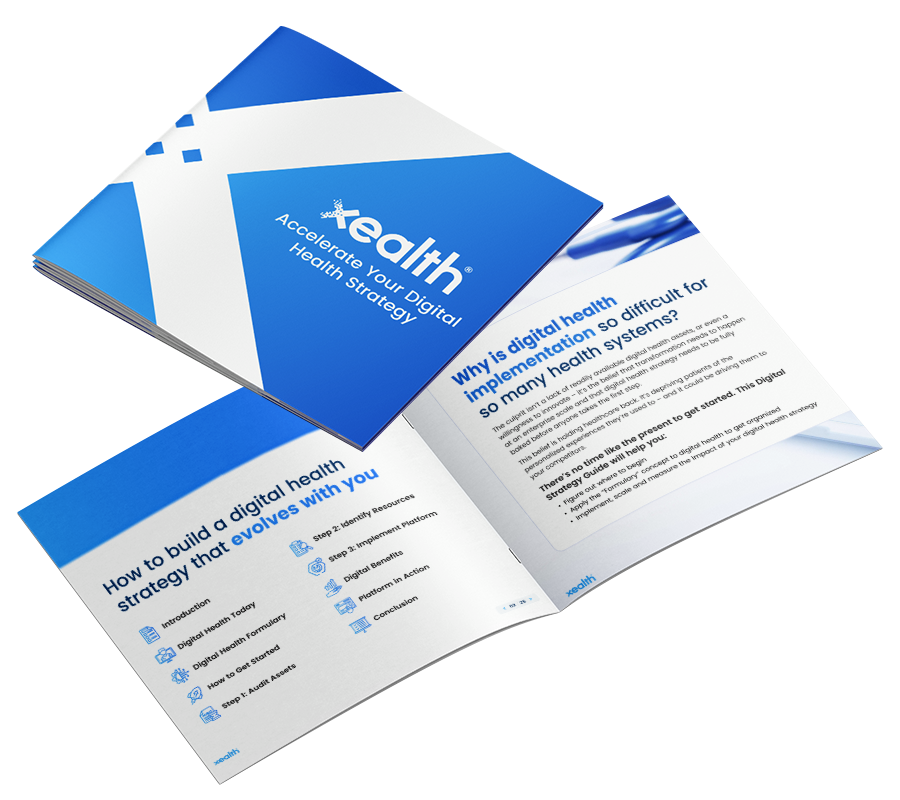Laurance Stuntz, SVP, Customer Success
When the C-level considers burnout in the healthcare industry, the focus is often on frontline clinicians, and rightfully so.
However, health system leaders must also recognize the burden placed on internal IT teams in healthcare organizations. The increasing adoption of digital health technologies and AI-driven tools leads to overwhelming data volumes and complex integrations, putting tremendous pressure on IT workers.
Elsevier Health’s 2022 “Clinician of the Future” report discovered:
- 56% of clinicians believe they will rely on AI-based tools for clinical decision-making
- 69% feel overwhelmed by the current volume of data
- 69% predict the widespread use of digital health technologies to become an even more challenging burden in the future
- As a result, 83% believe training needs to be overhauled so they can keep pace with technological advancements
An effective digital health formulary addresses challenges faced by IT teams and can help healthcare organizations alleviate their burden and prevent further staffing shortages and burnout.
Effectively Manage the Distribution of Patient Educational Materials
Patient education is a crucial aspect of healthcare, and many health systems use high-quality patient educational materials.
For instance, utilizing mobile applications for perioperative education has shown promising results. In a 2021 study:
- 86% of patients reported an improved surgical experience
- 96% said their perioperative education app offered essential reminders
- 90% felt the app clarified information
However, distributing and managing educational materials is often manual, requiring clinicians to order them as needed. Additionally, IT staff are burdened with regularly loading new and updated materials into the EHR.
To address this issue, healthcare organizations should partner with a digital health vendor that incorporates patient educational materials into the digital formulary and can automatically recommend and deliver relevant materials in the context of the patient journey. This approach ensures that patients receive essential information in an electronic format well in advance, reducing the clinician’s workflow burden and streamlining the process for IT teams. Such automation enables IT staff to focus on other critical tasks, improving overall efficiency and reducing burnout risks.
Bonus tip: Repurpose the valuable paper materials you already have as part of this effort.
Reduce the Need to Educate Digital Health Vendors
Many digital health vendors are startups or entrepreneurs who need a deeper understanding of healthcare and EHRs. Consequently, health systems and their IT teams often spend significant time educating these vendors on integration and EHR compatibility.
To ease this burden, working with a team of healthcare-specific experts who can facilitate communication between vendors and IT staff is beneficial.
By partnering with an experienced team, healthcare organizations can ensure smooth integration through APIs and sandbox-testing environments. This approach saves time and guarantees that data privacy policies are adhered to.
Offloading the burden of educating digital health “newbies” to the digital health formulary team helps reduce IT staff’s workload, improving their satisfaction and reducing burnout.
Facilitate Enhanced Collaboration and Communication
A common challenge in healthcare organizations is more direct communication between frontline workers and IT teams. Implementing an analytics platform that consolidates all digital health solutions in one place can bridge this gap.
With a comprehensive dashboard, IT staff and frontline clinicians can access actionable data, promoting better collaboration.
Different conditions and service lines exhibit varying engagement with digital health solutions. For example, expectant or new mothers typically use these tools more frequently than pre- and post-op patients.
Healthcare organizations can identify underutilized areas and optimize workflows with an analytics platform, relieving clinician frustration and IT burden. Enhanced clinician adoption and buy-in are achieved with readily available, integrated data, minimizing the need to chase answers from various vendors.
Organize Your Digital Formulary
Healthcare organizations must recognize the burden IT teams face due to the rapid adoption of digital health technologies. Organizations can prevent further burnout and staffing shortages by addressing their challenges while enhancing overall efficiency.
When selecting the digital health tools to support your overall digital health strategy, your leadership team should ask these three questions:
- Do I have the tools required to measurably reduce the amount of integration work my IT team must do?
- Do I have a way to analyze the performance of all of my digital tools in one place? Including understanding how my end users are ordering and interacting with the digital tools the organization makes available to them?
- Do I have a formulary platform flexible enough to accommodate new or changing service lines? Ideally the platform can accommodate multiple digital solutions for the same problem, including apps, content, device integration, remote patient monitoring, and even non-clinical services.
Xealth provides all the tools needed to answer yes to each of these questions, allowing you to focus your IT staff on their core responsibilities, streamline the integration process, centralize data analytics using the Xealth Digital Command Center (XDCC), and promote collaboration between healthcare teams. This can alleviate the IT staff’s burden and also lead to improved patient outcomes and enhanced clinician satisfaction.
By prioritizing the well-being of IT teams, healthcare organizations can foster a sustainable, technology-driven future for patient care.
To learn how Xealth can help, schedule your consultation today!
Get these Digital Health Formulary Resources:
Digital Health Formulary Resources




